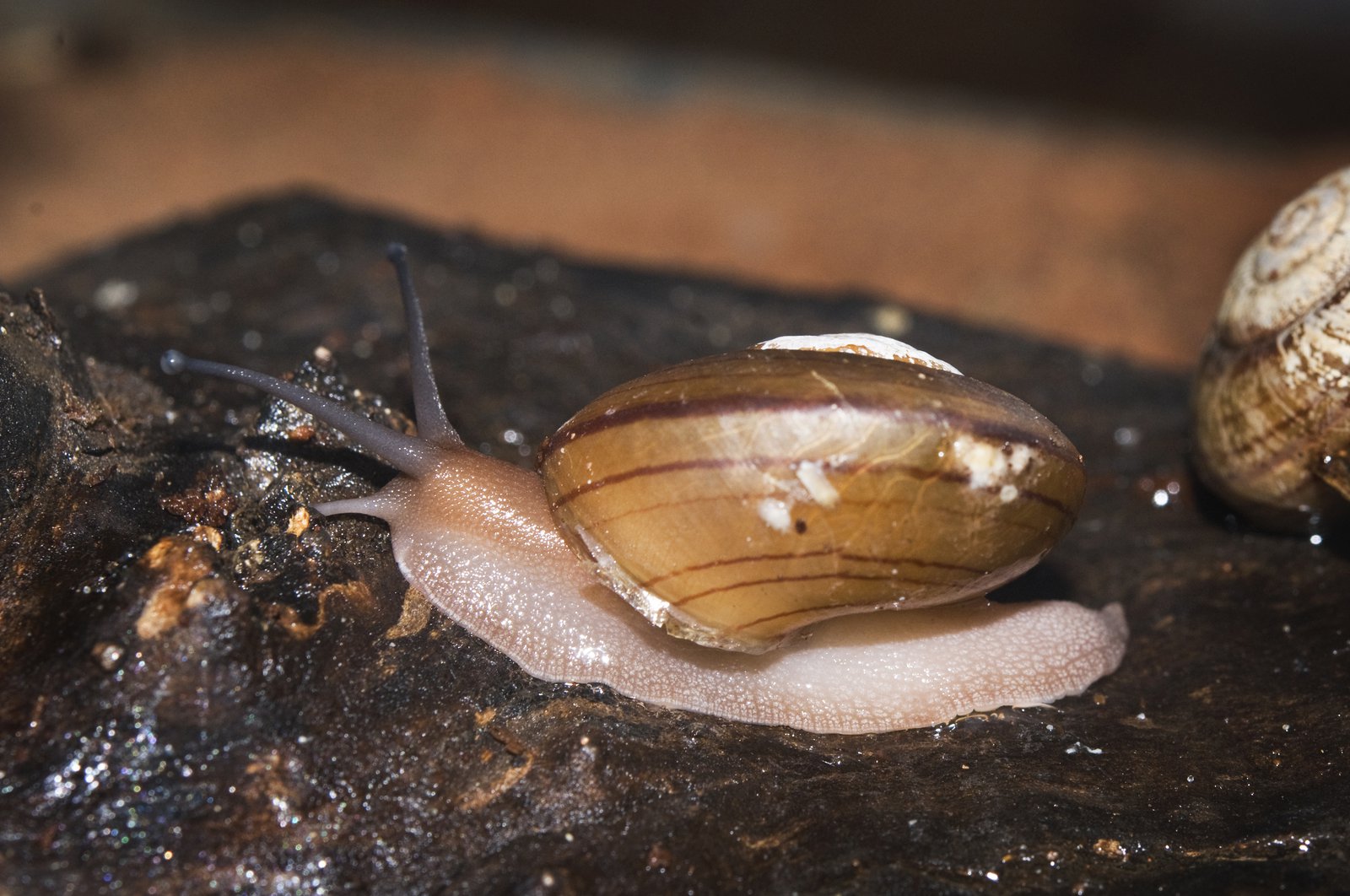Live displays in My Photo Studio
From December 2010 the following live invertebrates were displayed in 'My Photo Studio', giving visitors the opportunity to take their own wildlife photos and take advice from the experts.
Fraser's Rainforest Snail

Fraser's Rainforest Snail, Sphaerospira fraseri.
Image: Carl Bento© Australian Museum
Sphaerospira fraseri
Slightly larger than a Common Garden Snail,this is a native species of land snail that inhabits wet forested habitat of northern New South Wales and southern Queensland. The species feeds on fungi and rotting vegetation and is like all slugs and snails normally only encountered in the open after periods of rainfall.
Giant Preying Mantis
Hierodula majuscula
This is the largest species of mantis in Australia. Usually hunting insects, these giants can reach over seven centimeters long and have been reported feeding on small lizards, frogs and even tiny birds.
Botany Bay Cockroach

Botany Bay Cockroach, Polyzosteria limbata.
Image: Chris Hosking© Australian Museum
Polyzosteria limbata
Of the 400 species of cockroach in Australia, the pests we get in our homes are just 10 introduced species. Native Australian cockroaches are far better behaved and normally keep to themselves. The Botany Bay Cockroach loves to bask in the sun while sitting atop vegetation. You may be able to see them doing this now, lounging in the vegetation with its legs hanging down like a tiny leopard.
Giant Spiny Stick Insect

Giant-spiny Stick-insect, Eurycantha calcarata.
Image: Carl Bento© Australian Museum
Eurycantha calcarata
Stick insects (also known as phasmids) are normally docile animals that hang around in trees, blending in to the background, these phasmids however break the mold. They hide under back during the day and are only active at night. They can be aggressive with both males and females kicking out at threats, males possess sharp spurs on their back legs and are capable of drawing blood.
They feed on a variety of food plants such as fig (used as food at the Australian Museum) and can be a pest to coconut plantations.
Egyptian Beetle

Egyptian Beetle, Blaps polychresta.
Image: Carl Bento© Australian Museum
Blaps polychresta
Egyptian Beetles are an introduced species from Egypt and Syria and have been common in grain-growing areas of southern Australia since 1830. They are very active and can live for years in captivity.
The ancient Egyptians would hollow out the abdomen to produce a ‘bead’ that was used for ornamental purposes such as burial necklaces.










